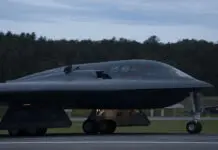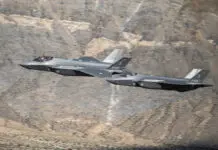The money Russia pays Iran for the large number of drones it uses in Ukraine, helps the Iranian weapon industry to develop new models.
These are exported now to different countries in low prices.
According to a report in the website of the Middle East media research institute (MEMRI) on January 23, 2024, Channel 1 IN Iran reported about “multitudes” of drones that were manufactured by Iran’s Ministry of Defense and are being delivered to the Islamic Republic of Iran Army for use in its countrywide combat arrays.
The drones according to the report include the Arash, Karrar, and Ababil-5 have operational ranges of up to 1700 kilometers and can reportedly be used to carry out precision strikes, perform reconnaissance, or intercept hostile aircraft.

According to the TV report multitudes of upgraded UAVs [unmanned aerial vehicles] for combat, reconnaissance, destruction, and electronic warfare were delivered to the Army’s combat arrays throughout the country.
“The operational radius of these UAVs is between 1,000 and 1,700 kilometers. They are being delivered to the army in order to increase our country’s deterrence capabilities. Each of the UAVs joining our country’s defensive fleet has unique characteristics.”
According to Matan Yanko – Avikasis and Liran Antebi , senior researchers in the Israeli institute for national security studies (INSS) Iran’s success in this field stems from the availability of “off-the-shelf technology” in the world of commercial and civilian content, including navigation devices, encryption tools, and even engines. All of these, along with the massive domestic investment in engineering, have allowed Iran to close the technological gaps, manufacture, and export large quantities of UAV s at attractive prices to a variety of customers,
“In addition, on October 18, 2023, the embargo imposed on Iran by the United Nations Security Council – barring the Islamic Republic from trading in advanced missiles, including UAV s – expired. This will make it easier for Iran to export UAV s not only to Russia, but to other countries that until now were concerned about doing business with Iran or were having trouble continuing their procurement: Venezuela, Sudan, and Ethiopia, all of whom have purchased the Ababil-2 UAV from Iran in the past.”
The recently formed “anti-Iranian drone” coalition is trying to fight the increased number of attacks by Iranian made armed drones , but so far with limited success,
Iranian made armed drones were used in recent months by the Houthi rebels in Yemen to attack cargo ships sailing the Red Sea.
The Houthis are one of Iranian terror proxies operating according to instructions from Teheran. The coalition members are characterized as “Targets of Iranian aggression”. Israeli official sources refused to comment on the structure of the coalition. Sources in Israel said that “U,S sensors in the relevant region are assisting the effort “
You may also like: Iranian Navy wants to expand globally with russian support









